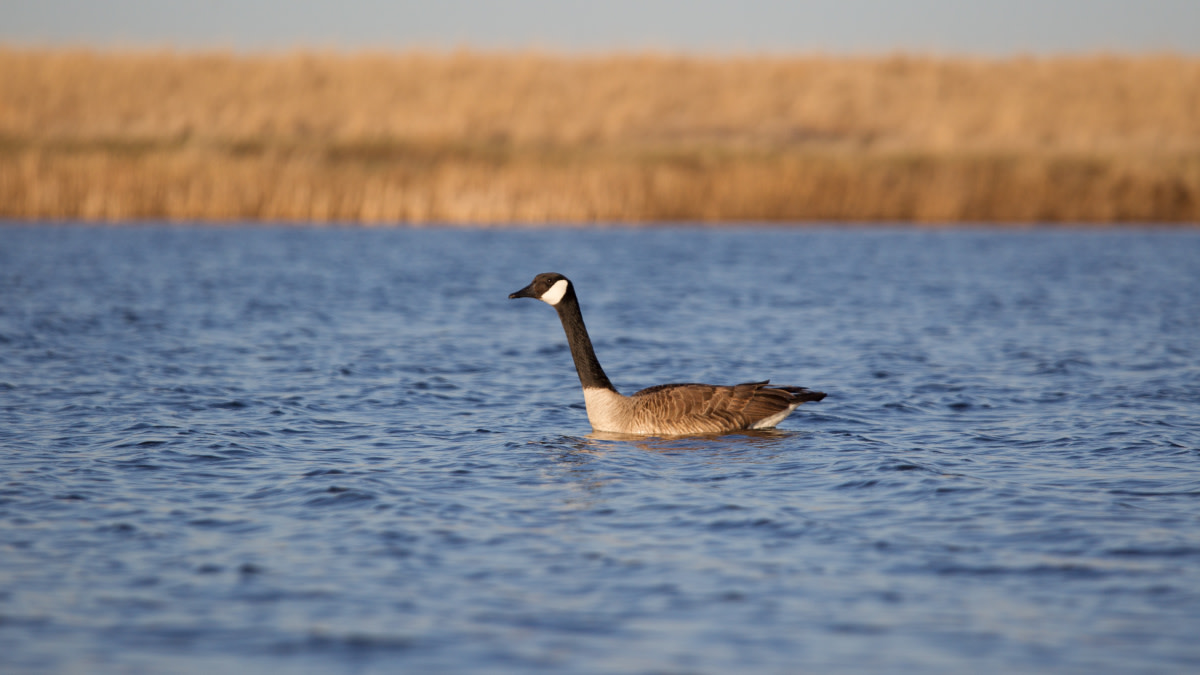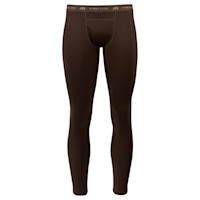
This is part three in Pat Durkin’s series looking at differing cultural perceptions of fair chase. In part one, he discussed shooting turkeys in flight. In part two, he discussed ground swatting grouse.
Anytime you wedge two or more goose hunters into a blind, you better settle on your hunt’s code of conduct for those new to the group.
Everyone must agree who’ll call the shots and, for better or worse, be the group’s chief conscience and ethics enforcer. Typically, the hunter who sets the highest ethical bar prevails, said Paul Wait, senior director of communications at Delta Waterfowl, a research and habitat-based conservation group in Bismarck, North Dakota.
Peer Pressure
“Goose hunting is generally a group activity, and so peer pressure comes into play,” Wait said. “Invariably, someone says they’ll never shoot a goose on the water or ground. That one vote is the ethic that wins out, even if it’s a 3-1 or 4-1 decision. I’ve seen that firsthand. No one wants to be ridiculed, even silently, so they accept that guy’s position.”
Even then, however, different groups handle situations in various ways. Wait listed some examples:
- If a goose lands on its own, Group A leaves it alone to serve as a living, breathing decoy. They let it stay as long as it wants, and don’t shoot it when it leaves.
- If that goose lands in Group B’s decoys, it’s declared a noncombatant until its webbed feet leave the ground or water at its choosing.
- If that goose lands in Group C’s decoys, they flush it and shoot once it’s airborne.
- If that goose lands in Group D’s decoys and stands where it can be shot without collateral damage (blasted decoys), a designated hunter takes a head/neck shot.
And sometimes the goose’s fate simply depends on how a group’s hunt is going. They might start the morning enforcing Group A’s standard, but default to Group D’s approach within hours. Most goose hunters aren’t rigid in their convictions, said Jim Tantillo, a professor at Cornell University who teaches environmental ethics and history, and the philosophy and morality of hunting.
“Context matters,” Tantillo said. “The ethics and aesthetics of waterfowling are really interesting. Using your calls and placing your decoys—that’s what it’s all about for some guys. That’s their fun, their challenge. They don’t have to shoot every goose that decoys, or prevent every goose from getting away. For me, though, I have no problem taking headshots. The longer I’ve been hunting geese, the more I’ve come to love it. Now it’s much more about the meat. In the course of a season, we pack almost a deer’s equivalent of goose breasts into the freezer.”
Taylor Finger, the migratory game bird ecologist at the Wisconsin Department of Natural Resources, said most hunters prefer wingshooting geese, but few get self-righteous about shooting one after it lands. “If one lands in the decoys, I’ll stand up and step forward to flush the goose and shoot it,” Finger said. “I’ve gone home empty-handed too many times after sitting around watching a bird in the decoys. If I’ve given it a chance to get away, I’ll shoot it on the ground or water.”
Wait said the context also changes when kids are present. Entire groups of adults will forgo wingshooting restrictions to help youngsters bag geese. “If you have a kid in the mix, that breaks things differently,” Wait said. “You can make that work. Shooting a goose on the ground or water is much different than a duck. Shooting a duck on the water is difficult. It’s a smaller target, a short neck, and less exposure above the waterline.”
Finger said shooting decisions aren’t just about ethics, fair chase and personal preferences. Dogs and decoys matter, too. No one who owns either, or both, wants them shot. Finger said once a dog bolts the blind, all shooting must stop. And even though shotgun pellets can’t kill a decoy, they can ruin them.
“When a guy spends thousands of dollars for the 200 decoys you see on some fields, and he’s bought a trailer to haul them around, he’s invested,” Finger said. “He gets the last word on whether you can ground-swat. If a goose lands out there in the spread, the odds of you hitting it and missing every decoy is pretty low. When someone feels strongly that you not shoot, you can’t be ‘that guy’ who shoots. You’ll hurt everyone’s experience.”
Deadliest Shot
Errant shots create another concern among goose hunters: wounding losses. And that’s more complicated than the simple goose-to-turkey comparisons many hunters voice. Yes, turkeys and geese are both big birds, and hunters can kill them cleanly by aiming at the head/neck junction when the neck fully extends like a periscope. But goose hunting scenarios are often more complicated than turkey hunting situations, given all the decoys, the common presence of retrievers and a goose’s posture and position on land or water.
“My highest-percentage shot is when the geese have committed to the decoys, their feet are down, their wings flared, they’re coming straight in, and they’re hovering about 5 feet off the ground or water,” Tantillo said. “That’s a deadly shot. But once they’re on the ground, they’re like a tank. They have tough feathers, thick down, and lots of bone. It’s very easy to cripple them then, especially if they start walking away from you. If they’re at 45 yards, you’re going to start bouncing pellets off their backs. That’s the boundary of ethically risky shots.”
Eric Nuse—a retired Vermont game warden and a past executive director of the International Hunter Education Association and Orion, The Hunter’s Institute—also discourages most shots at a goose’s backside.
“If they land in water, we let them stay to keep the water moving,” Nuse said. “You don’t want to shoot them from behind. Their vital organs are protected by bone in their hips, thighs and back. And if any pellets get through all that bone and feathers, they still have to get past the gizzard. Unless you break both wings, you’ll likely have a wounding shot and an escaping goose.”
Wait agrees, and also advises against departing wingshots. “If you jump a goose and it flies straight away, you’ll never hit its head and neck,” Wait said. “Everything is shielded by that big body. Nothing vital is exposed. They can absorb a lot of steel and keep going. Plus, they’re getting farther away from you every second. Unless you’ve already hit them once, don’t shoot.”
Sky Busting
As much as goose hunters enjoy discussing the nuances of ground- and water-swatting geese, they think “sky-busting”—shooting at geese beyond shotgun range—is an actual problem, not just an ethical failing.
“That was the most common, unethical problem I saw as a warden when I was working waterfowlers,” Nuse said. “And the more an area was crowded, the worse and worse the sky-busting gets. The first guy to shoot always thinks they’re closer than they are, and then it just spreads across the marsh. You have to practice estimating range. For training, we used to hoist decoys into trees and have hunters estimate the range.”
Citing research by the Cooperative North American Shotgunning Education Program, or CONSEP, Finger said the first shot hunters take at a Canada goose averages 57 yards. That distance came from trained observers watching hunters in the field. Further, when CONSEP instructors tested those enrolled in advanced shotgun (wingshooting) classes offered by state wildlife agencies, they found the average hunter couldn’t hit 75% of clay targets beyond 20 yards. Those tests also found most hunters shooting 30 to 40 yards beyond their personal effective range.
Finger encourages hunters to contact their state’s wildlife agency to enroll in an advanced shotgun shooting class. The Wisconsin DNR charges $25 for the class, three of which are scheduled for July and August. “You won’t find a better value,” Finger said. “The three major causes of wounding loss are poor shooting, poor distance estimating, and poor choices in guns and ammo. These classes help dramatically.”
Finger said hunters also fare poorly when asked how many waterfowl they hit but don’t recover, with estimates ranging from 14% to 20%. A 1994 study by Canadian researchers, however, said wounding rates reported by trained observers watching hunters put waterfowl wounding rates at 36% and 39%.
Finger also recommends hunters download and study “Tom Roster’s Nontoxic Shot Lethality Table.” “When you’re shooting at geese 35 yards away and farther over decoys, you need to use steel BB to BBB shot pellets,” Finger said. “If you split the difference on those wounding rates and say it’s 25%, that equates to 4.3 million wounded ducks and geese across the United States. We have to do better than that.”
Feature image via Phil Kahnke.






